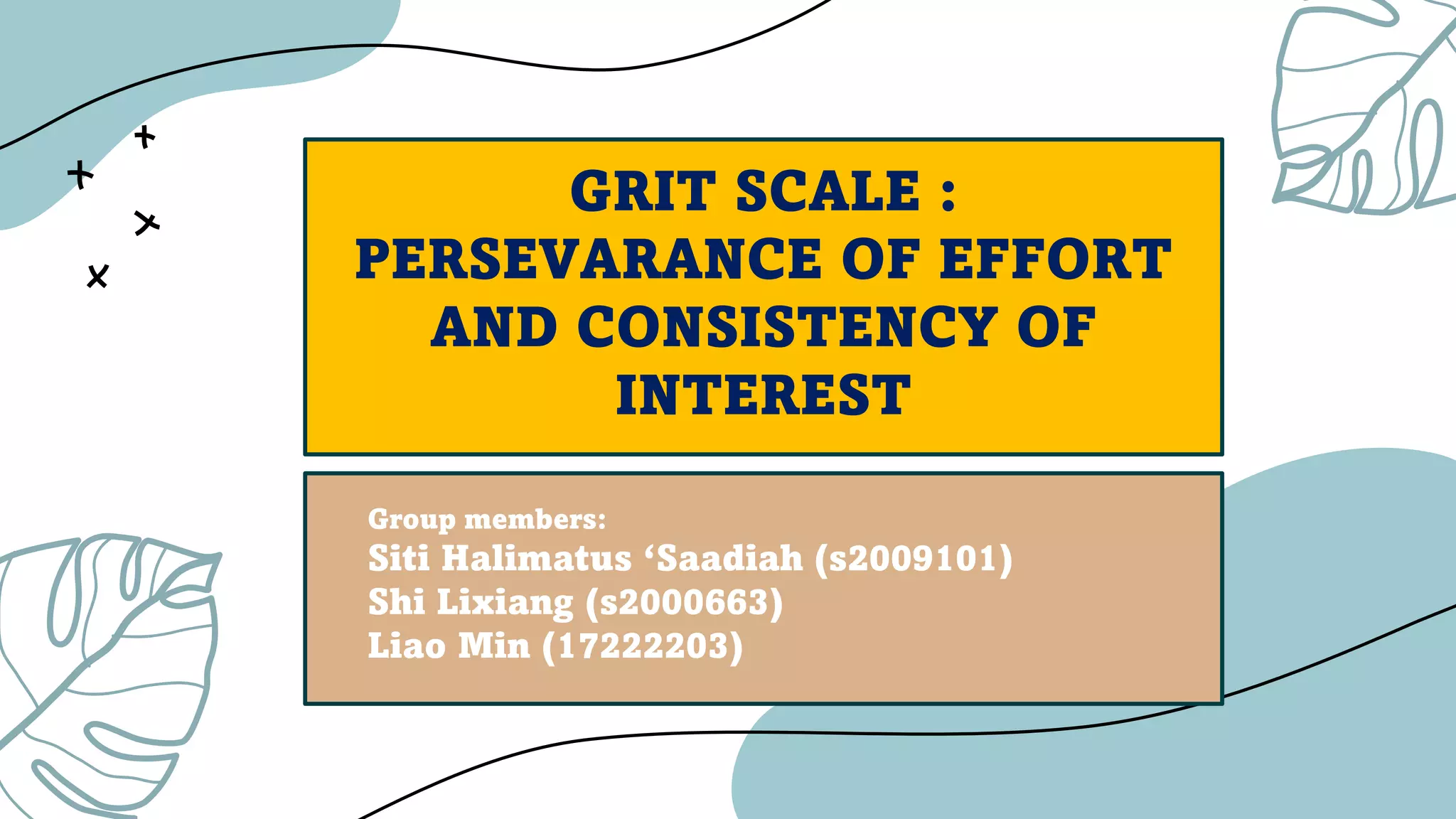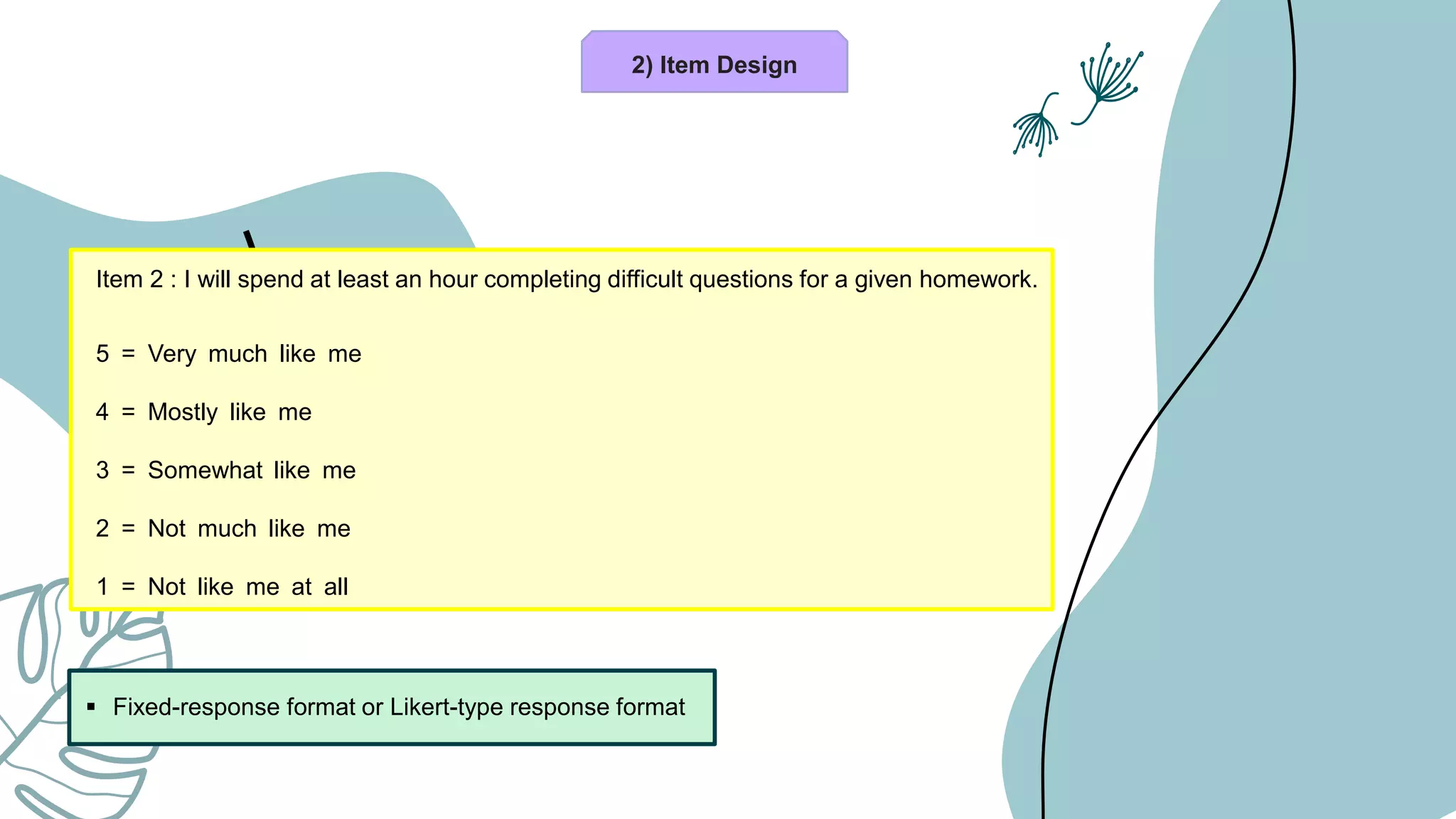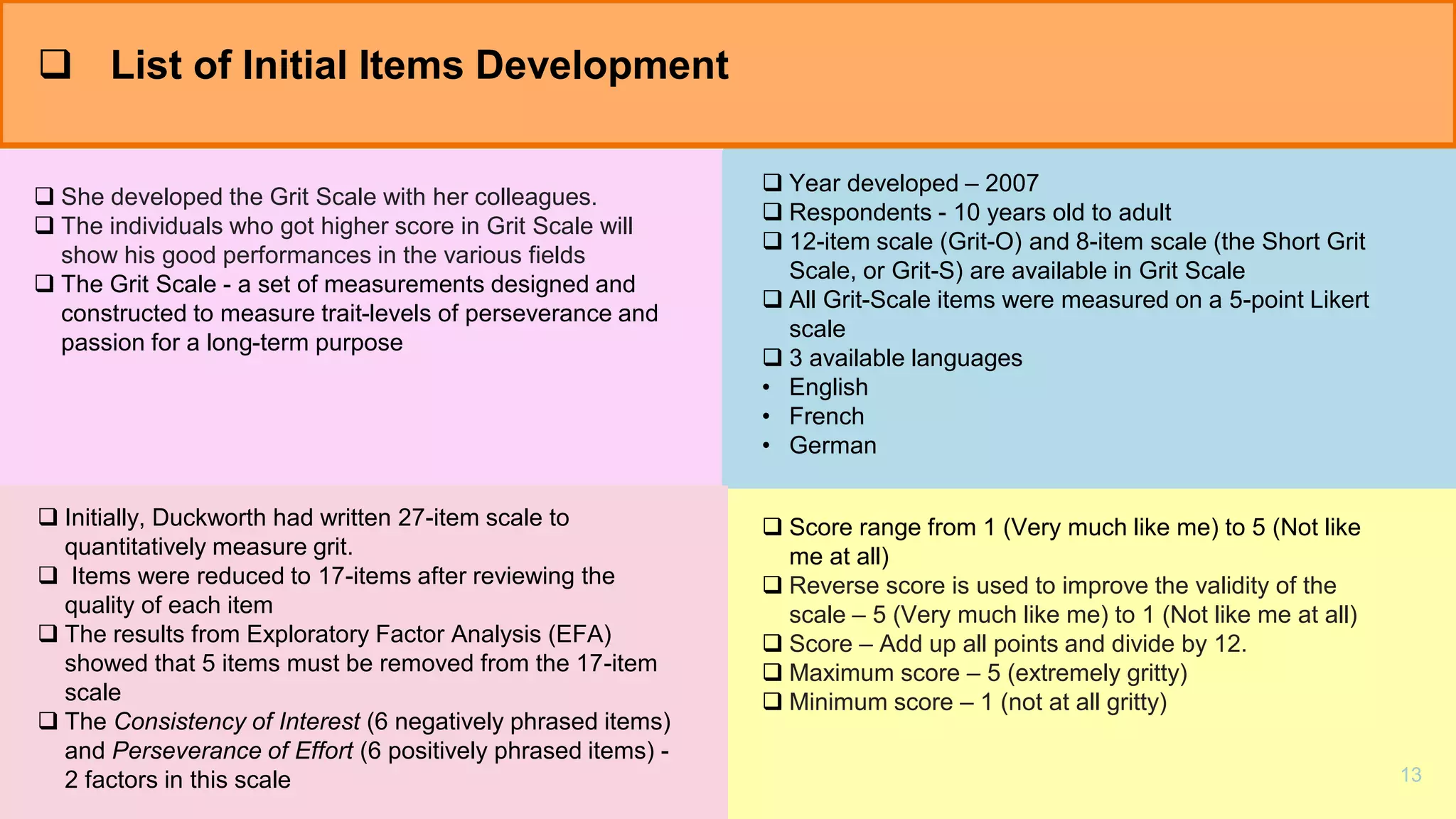- The document describes the development and validation of the Grit Scale, which measures perseverance of effort and consistency of interest.
- Originally developed by Angela Duckworth in 2007, the scale has undergone several revisions and validations. It now exists in several versions including the 12-item Grit-O and 8-item Grit-S.
- The scale uses a 5-point Likert scale response format. Items measure two factors: Perseverance of Effort and Consistency of Interest. Higher scores indicate higher levels of grit.
- Several studies are referenced that have validated the scale in various contexts and populations, showing it is a reliable and valid way to measure grit.















![5.0 References
Baraquia, Lee (2020). Develoment of a Teacher Grit Scale (TGS): Predicting the Performance of Educators in the
Philippines. New Educational Review, 60 (13), 165 – 177. http://doi.org/
10.15804/tner.2020.60.2.13
Duckworth, A.L., Peterson, C., Matthews, M.D., & Kelly, D. R. (2007). Grit: Perseverance and Passion for Long-
Term Goals. Journal of Personality and Social Psychology, 92(6), 1087 – 1101. doi:10.1037/0022-
3514.92.6.1087
Duckworth,A.L., & Quinn, P.D. Development and validation of the short grit scale
(grit-s)[J]. Journal of Personality Assessment, 2009, 91(2), 166-174.
16](https://image.slidesharecdn.com/gritscalegroup-230831061227-228ba948/75/GRIT-SCALE-GROUP-pptx-16-2048.jpg)

![Salisu, Isyaku & Hashim, Norashidah & Shehu Mashi, Munir & Galadanchi, Aliyu. (2020). Perseverance of effort
and consistency of interest for entrepreneurial career success: Does resilience matter? Journal of
Entrepreneurship in Emerging Economies. ahead-of-print. 10.1108/JEEE-02-2019-0025. Duckworth, A., &
Gross, J. J. Self-control and grit: Related but separable determinants of success[J]. Current Directions in
Psychological Science, 2014,23(5), 319-325.
Timothy, T. (2013). Handbook of Quantitative Methods for Educational Research. Sense Publishers.
Wilson, M. (2005). Constructing Measures: An Item Response Modeling Approach. Lawrence Erlbaum
Associates, Publishers.
Wetson, L. (2015). A Replication and Extension of Psychometric Research on the Grit Scale (Master’s Thesis,
University of Maryland). Retrieved from
https://drum.lib.umd.edu/bitstream/handle/1903/16401/Weston_umd_0117N_15858.pdf?sequence=1&isAll
owed=n
18](https://image.slidesharecdn.com/gritscalegroup-230831061227-228ba948/75/GRIT-SCALE-GROUP-pptx-18-2048.jpg)